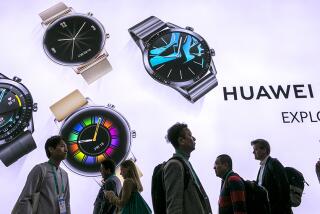A Trade Hullabaloo That Need Not Be
Too often we see problems of perception and wounded feelings surface in the U.S.-Japan relationship. On issue after issue, Americans have come away from a negotiation believing they have reached a firm accord guaranteeing finite results conditioned by their own practices. The Japanese, on the other hand, possess a more flexible view. They feel what they have committed themselves to is a diligent effort to reach mutually desired goals. Later, when either the schedule or the numerical target is not quite reached, a hullabaloo breaks out. Americans profess outrage; Japanese feel bashed. Too often a clash of this kind has erupted as cultural and business practice differences arise to put the parties at odds. Many scars linger.
Not everyone appreciates the efforts made by Japanâs electronics industry since the 1986 U.S.-Japan semiconductor agreement. Significant advances have been made and the prospect for sustained growth of U.S. sales in Japan enhanced. In 1988 alone, U.S. producers increased their sales to Japan by 55%. And the growth rate of foreign semiconductor sales to Japan far exceeded the growth of the Japanese semiconductor market as a whole.
Despite these advances, the U.S. electronics industry is disgruntled. Its expectations have not been met. As a result, accusations have been hurled across the Pacific. This, of course, is not the first time misunderstandings have plagued an agreement between our two countries.
The agreement established a target for imports of American semiconductor products. But the ink was hardly dry before clamor erupted. The Americans felt that the Japanese were committed to specific goals within specific timetables. The Japanese interpretation was that the commitment was to goals within a less rigid time period. So we now have on our hands another awkward dispute between friends.
By now, our past experience in such negotiations should condition both sides to recognize that the party across the table brings with them a profoundly differing perspective. Expectations should be adjusted accordingly. By now, we should understand that even after a solemn agreement has been worked out laboriously and in good faith, disputes over interpretation are almost inevitable. Before either nation cries âfoul,â there should be careful consideration of both nationsâ differing traditions, standards and business practices.
The two countries have a complex relationship. On the surface much seems serene. Japanese products do well in American markets. America finds Japan a reliable ally. But beneath the surface a sense of unease prevails and grows. Polls show that Americans see Japanese economic practices as unfair. The Japanese in turn blame faulty American policies for our disputes.
Although the United States and Japan obviously have a wealth of common interests, we continue to suffer from recurrent fallout brought about by our wildly dissimilar cultures.
When faced with an alien culture, suspicion of motives finds fertile soil in which to grow. Prudence dictates that this suspicion must not be permitted to fester.
We can point to one positive feature that characterizes the electronics industry in both countries. In contrast to previous years, the Japanese and the American industriesnow deal directly with each other, rather than through respective government organizations.
This kind of cooperative effort at international problem-solving has much to commend it. It is well for Japanese electronics manufacturers to bring their capabilities and needs to the attention of their American counterparts and to seek to induce American companies to design products marketable in Japan. At the same time, Americans must be assured that the often elusive Japanese market is open.
We should all be encouraged by Japanese efforts to promote the current ongoing dialogue between U.S. suppliers and Japanese users. The recent seminar sponsored for this purpose by the Japanese electronic industry in the heart of Californiaâs Silicon Valley is a particularly conspicuous example of this outreach.
Although many Americans have questioned Japanese intentions in this matter, a calmer appraisal would recognize that it is now actually in Japanâs self-interest to increase imports, including imports of foreign semiconductors. Japan has acknowledged that it must expand its own consumer demand. To meet this demand, a new high level of goods from overseas is starting to flow in. Given time, this will substantially increase U.S. semiconductor exports and will serve to integrate American suppliers into Japanâs economic system. Meanwhile, a bit of patience is wise counsel.





